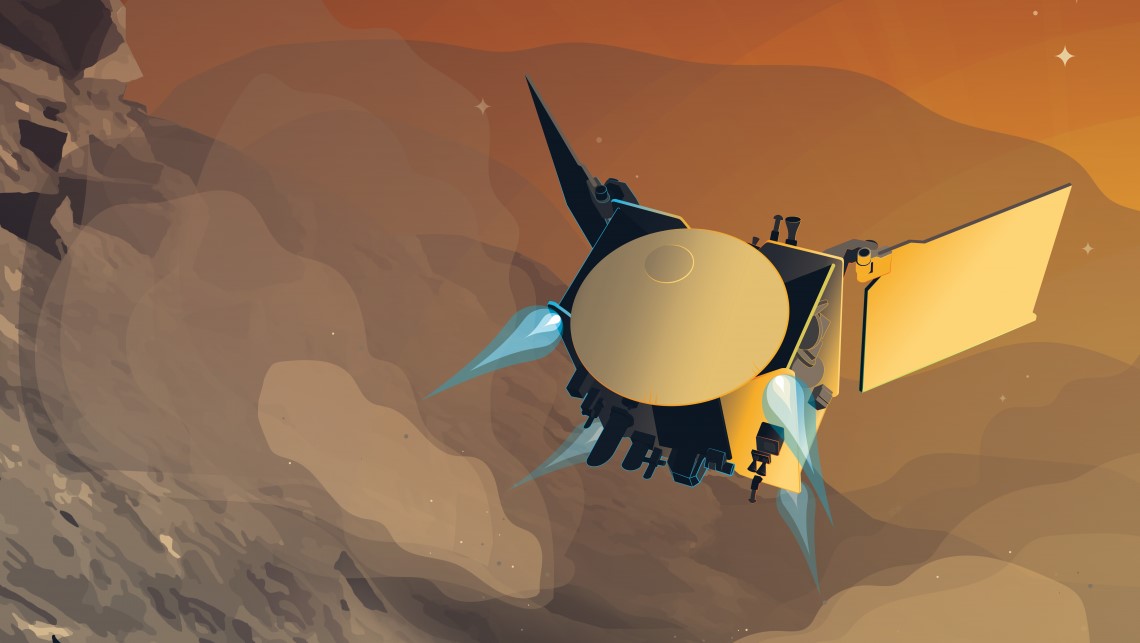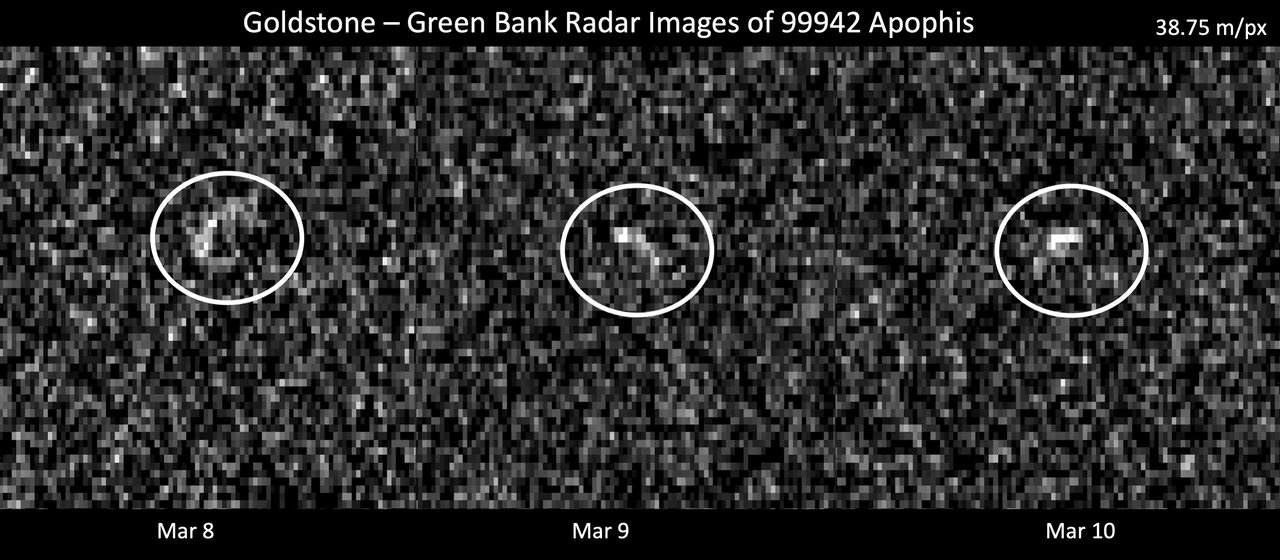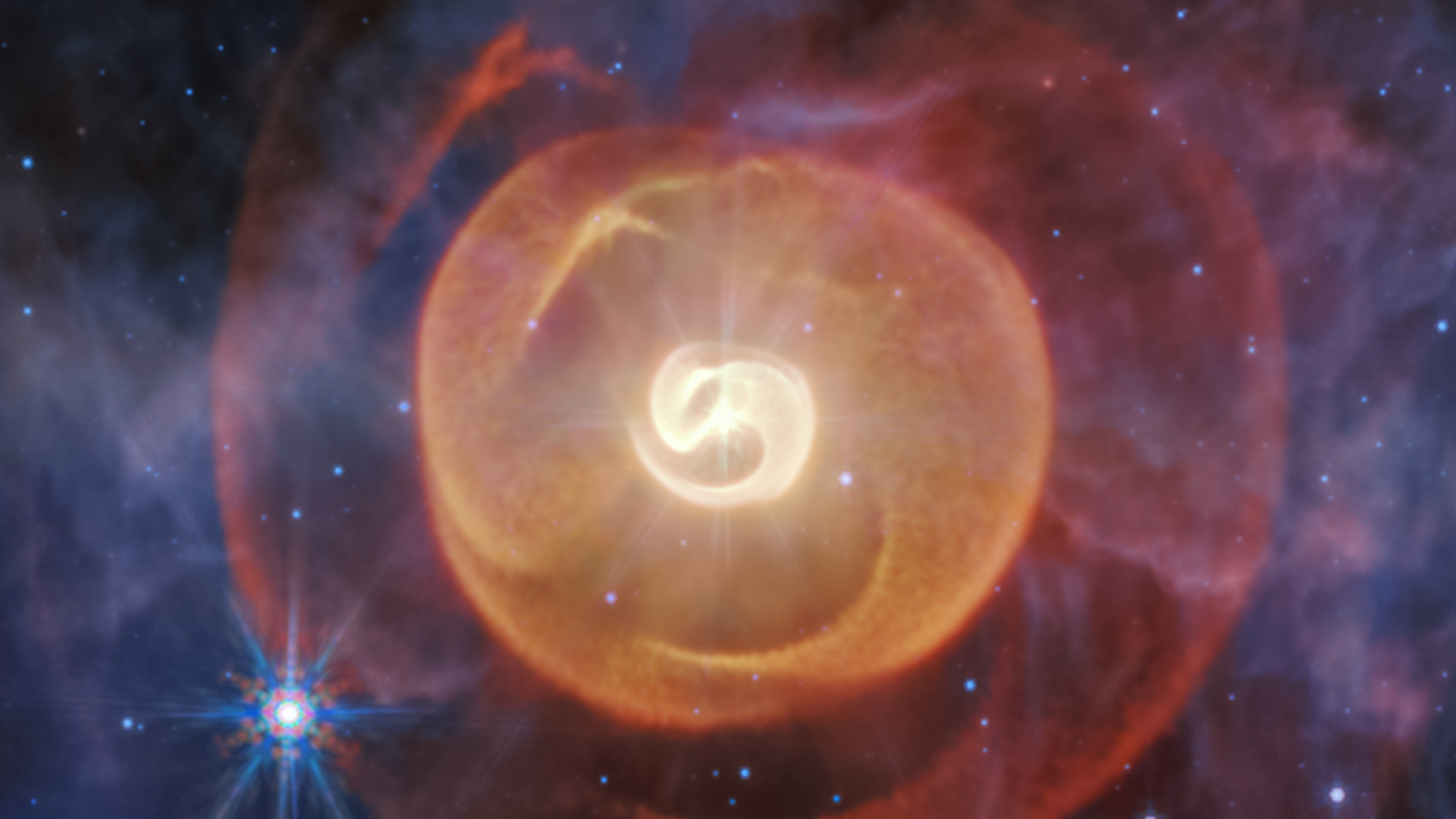NASA's OSIRIS-REx spacecraft will visit asteroid Apophis
Apophis, get ready for your close-up.
NASA's asteroid-sampling OSIRIS-REx mission, on its way back to Earth from its visit to asteroid Bennu, will take a trip to another space rock. The probe is set to spend 18 months studying the infamous near-Earth asteroid Apophis, watching the rock during a close, but very safe, approach it will make to planet Earth in 2029.
The mission will also acquire a new moniker when it is officially redirected to Apophis in October, 2023. Instead of being called OSIRIS-REx, which stands for the Origins-Spectral Interpretation-Resource Identification-Security-Regolith Explorer, the mission will become OSIRIS-APEX, which is short for OSIRIS-Apophis Explorer.
Related: Huge asteroid Apophis flies by Earth on Friday the 13th in 2029, a lucky day for scientists
The spacecraft will provide scientists a rare opportunity to examine a potentially hazardous asteroid up close. To clarify, while the asteroid falls under the classification of potentially hazardous asteroid because of its large size and ability to make close approaches to Earth, Apophis does not pose a threat to Earth.
Previously, scientists thought Aphophis might pose a small threat to Earth during a flyby in 2068, but newer observations ruled out that threat, as described in a reassessment of its risk last year. Still, with the asteroid only coming to within a tenth of the Earth-moon distance in 2029, this flyby will be an opportunity for researchers to see Apophis up close.
"People in Europe and Africa will be able to see it with the naked eye, that's how close it will get. We were stoked to find out the mission was extended," Dani DellaGiustina, who will become the principal investigator of OSIRIS-APEX after the probe's current mission ends, said in a statement.
Breaking space news, the latest updates on rocket launches, skywatching events and more!
DellaGiustina, who is a researcher at the University of Arizona, is now deputy principal investigator of OSIRIS-REx. The mission's current principal investigator Dante Lauretta (also a researcher at the University of Arizona) will remain in his role until the mission shifts to its new objective, the statement noted.
Related: Comet Shoemaker-Levy 9's epic crash with Jupiter in pictures
NASA and its partners are on a long-term quest to catalogue the number of asteroids in our solar system and their size, assessing the percentage of those objects that may pose a possible threat to Earth, however small. Decades of searching have found no imminent asteroid threats to Earth; the risk posed by Apophis was downgraded after it made a close flyby of Earth on March 5, 2021 and scientists refined its orbital predictions based on fresh observations.
While OSIRIS-REx is best known for snagging a sample from asteroid Bennu, this successor mission will instead stick in orbit around Apophis for 18 months with no touchdowns at all.
To do this requires the team to redirect the spacecraft. It will also split the team apart, with one group covering the analysis of Bennu's sample and leaving the rest of the team tasked with keeping the spacecraft healthy and able to finish out a few more years in space. The spacecraft launched in 2016 and will be 13 years old, almost double its first mission's lifetime, by the time it studies the close approach of Apophis in 2029.
Related: Defending Earth against dangerous asteroids: Q&A with NASA's Lindley Johnson
The spacecraft's extended mission will add another $200 million to the mission's current cost cap of $800 million, for a total cost of $1 billion, though it will allow scientists to study Aphophis without launching a separate, second spacecraft.
Most of the instruments on the spacecraft are healthy, save for the low-energy laser transmitter of the Canadian OSIRIS-REx Laser Altimeter (OLA) that stopped working in 2020 after its primary mission was concluded, according to SpaceQ. (The high-energy laser transmitter was still functioning well at that time.)
But with the remaining roster of tools available, the mission team has an ambitious agenda set for observing Apophis.
In addition to observing Apophis for 18 months and collecting data all along the journey, the spacecraft "will make a maneuver similar to the one it made during sample collection at Bennu, by approaching the surface and firing its thrusters. This event will expose the asteroid's subsurface, to allow mission scientists to learn more about the asteroid's material properties," according to the statement from the University of Arizona.
The scientists plan to study the asteroid's composition, along with how it will be affected by the gravitational pull of our planet when it gets close to us. Apophis and Bennu are roughly the same size (roughly 1,000 feet (300 meters) across), but are different types of asteroids. Apophis is in the same S-type family as ordinary chondrite meteorites, while Bennu is a B-type linked with carbonaceous chondrites that potentially delivered water to Earth, early in our history.
Follow Elizabeth Howell on Twitter @howellspace. Follow us on Twitter @Spacedotcom or Facebook.

Elizabeth Howell (she/her), Ph.D., was a staff writer in the spaceflight channel between 2022 and 2024 specializing in Canadian space news. She was contributing writer for Space.com for 10 years from 2012 to 2024. Elizabeth's reporting includes multiple exclusives with the White House, leading world coverage about a lost-and-found space tomato on the International Space Station, witnessing five human spaceflight launches on two continents, flying parabolic, working inside a spacesuit, and participating in a simulated Mars mission. Her latest book, "Why Am I Taller?" (ECW Press, 2022) is co-written with astronaut Dave Williams.



